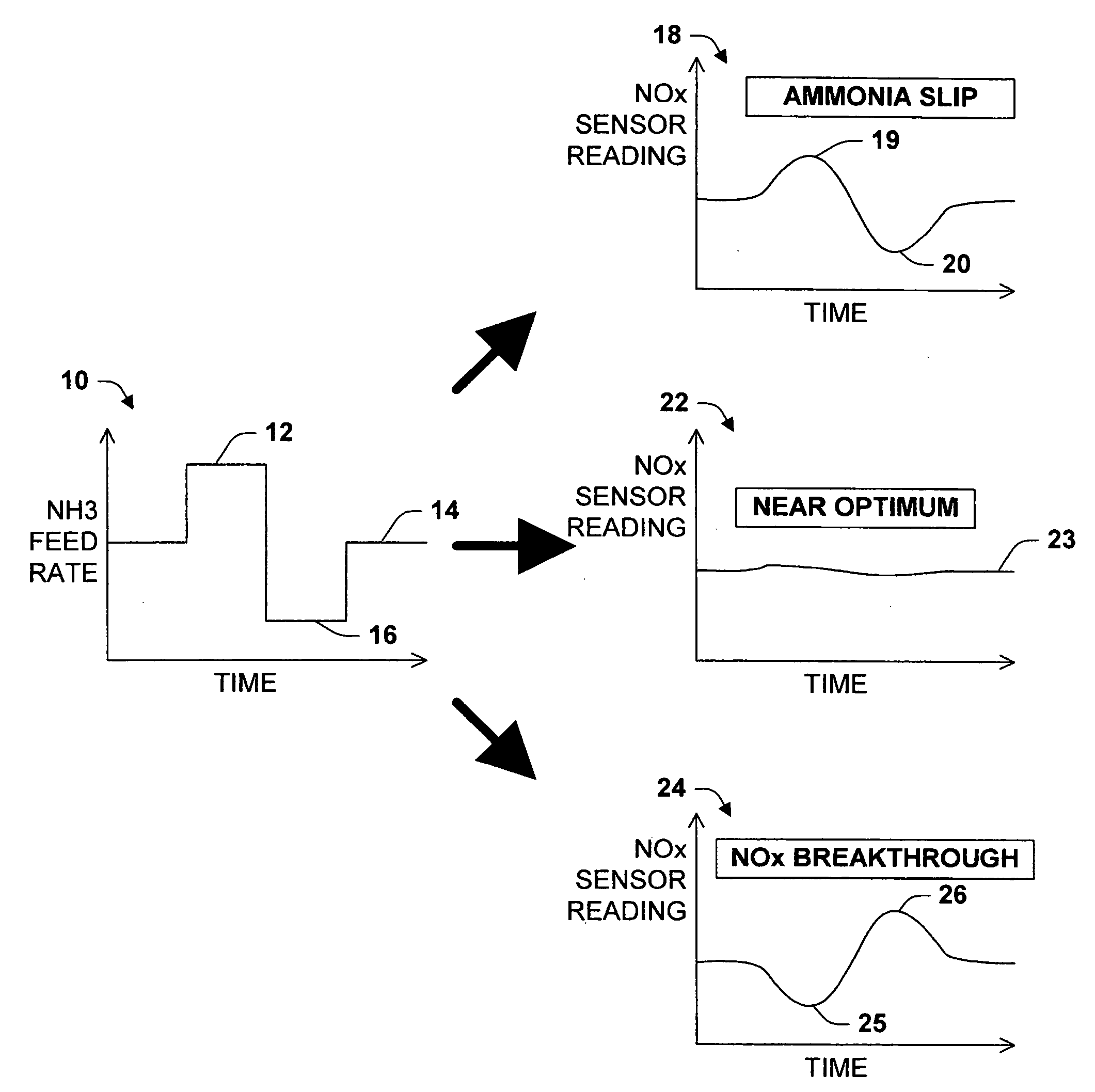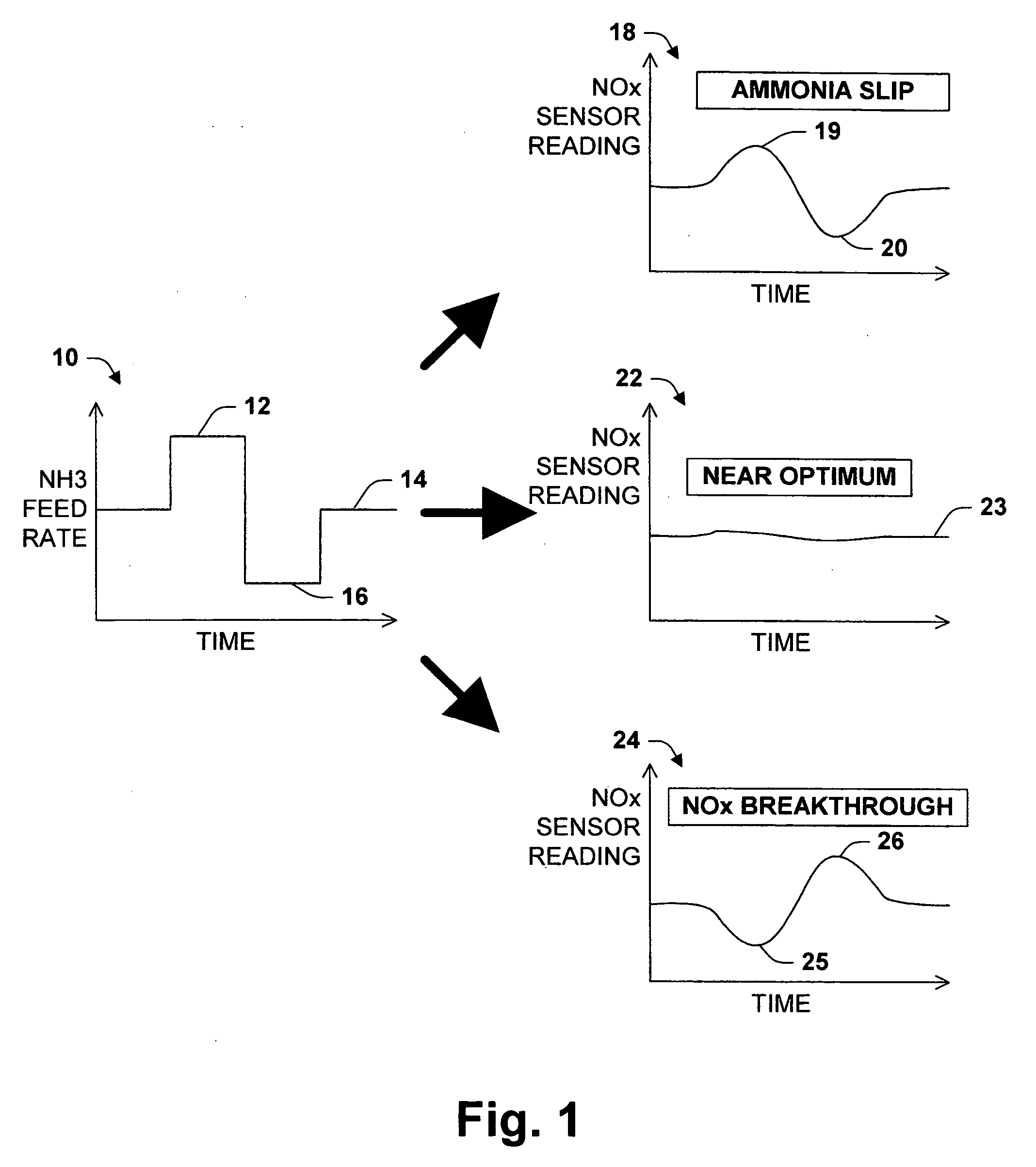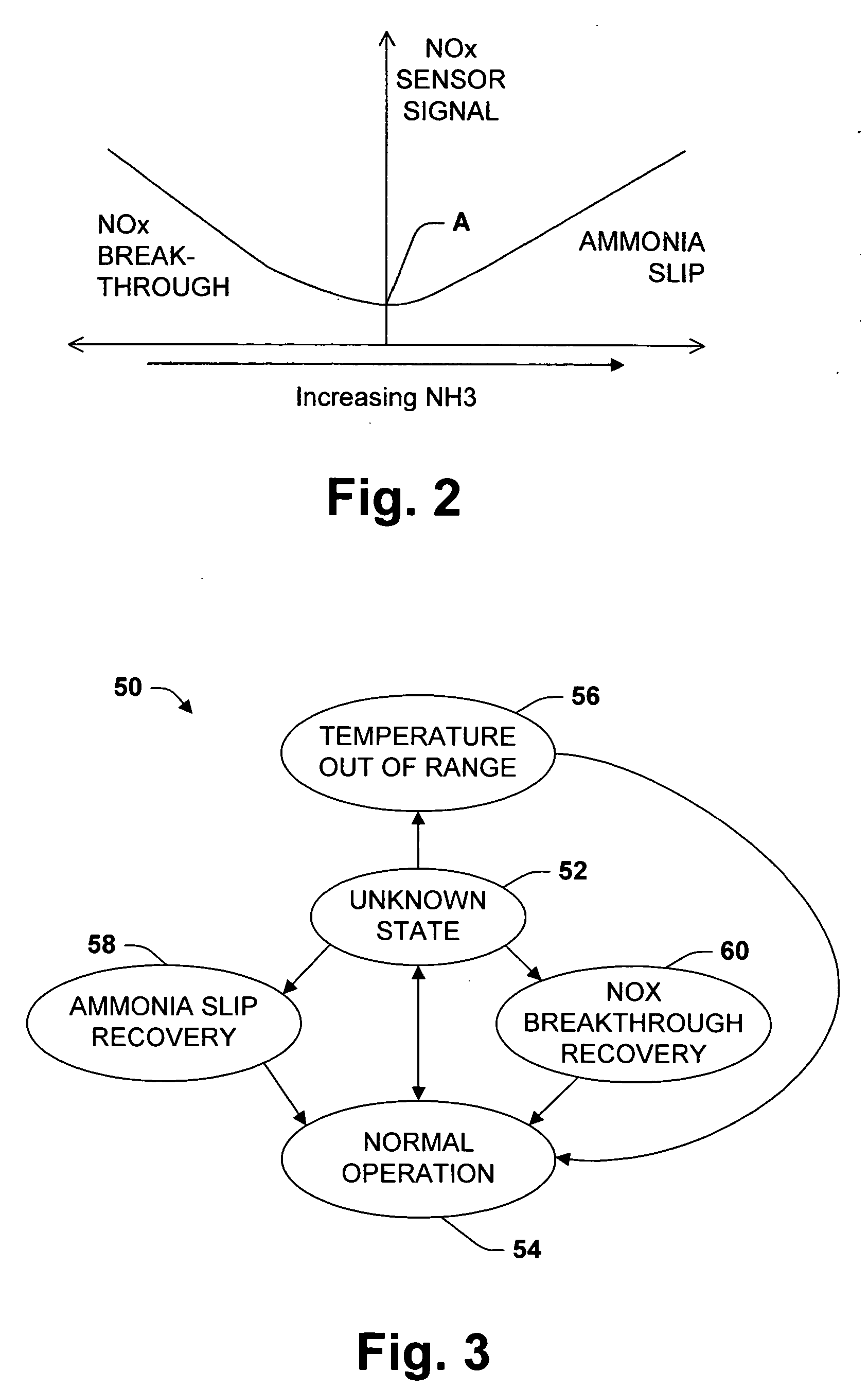Strategy for controlling NOx emissions and ammonia slip in an SCR system using a nonselective NOx/NH3
a technology of nox and ammonia slip, which is applied in the direction of electric control of exhaust, separation process, instruments, etc., can solve the problems of exhaust too oxygen-rich for three-way catalysts to be effective, vehicle exhaust with internal combustion engines, and considerable effort, so as to increase the amount of nox adsorption in the reactor, and reduce the amount of ammonia
- Summary
- Abstract
- Description
- Claims
- Application Information
AI Technical Summary
Problems solved by technology
Method used
Image
Examples
Embodiment Construction
[0034] The present invention is adapted to NOx sensors that are cross sensitive to ammonia. FIG. 2 illustrates the typical response of such a sensor downstream of an SCR reactor. At low ammonia feed rates, the sensor signal is high due to unconverted NOx. This will be referred to as NOx breakthrough, which is an NOx concentration downstream the SCR reactor significantly in excess of what would be found with an optimal ammonia feed rate. As the feed rate increases towards an optimum A, the signal decreases due to reduced NOx concentration. At the optimum A, the conversion of NOx is essentially maximized, NOx concentration is near the minimum achievable, and ammonia slip is low. If the ammonia feed rate continues to increase, the detector signal begins to rise again due to unreacted ammonia escaping the reactor. A significant amount of unreacted ammonia escaping the reactor is referred to as ammonia slip.
[0035] During transient operation of a vehicle, the NOx concentration and exhaus...
PUM
| Property | Measurement | Unit |
|---|---|---|
| mole ratio | aaaaa | aaaaa |
| temperature | aaaaa | aaaaa |
| temperature | aaaaa | aaaaa |
Abstract
Description
Claims
Application Information
 Login to View More
Login to View More - R&D
- Intellectual Property
- Life Sciences
- Materials
- Tech Scout
- Unparalleled Data Quality
- Higher Quality Content
- 60% Fewer Hallucinations
Browse by: Latest US Patents, China's latest patents, Technical Efficacy Thesaurus, Application Domain, Technology Topic, Popular Technical Reports.
© 2025 PatSnap. All rights reserved.Legal|Privacy policy|Modern Slavery Act Transparency Statement|Sitemap|About US| Contact US: help@patsnap.com



